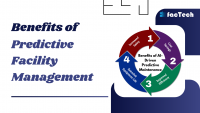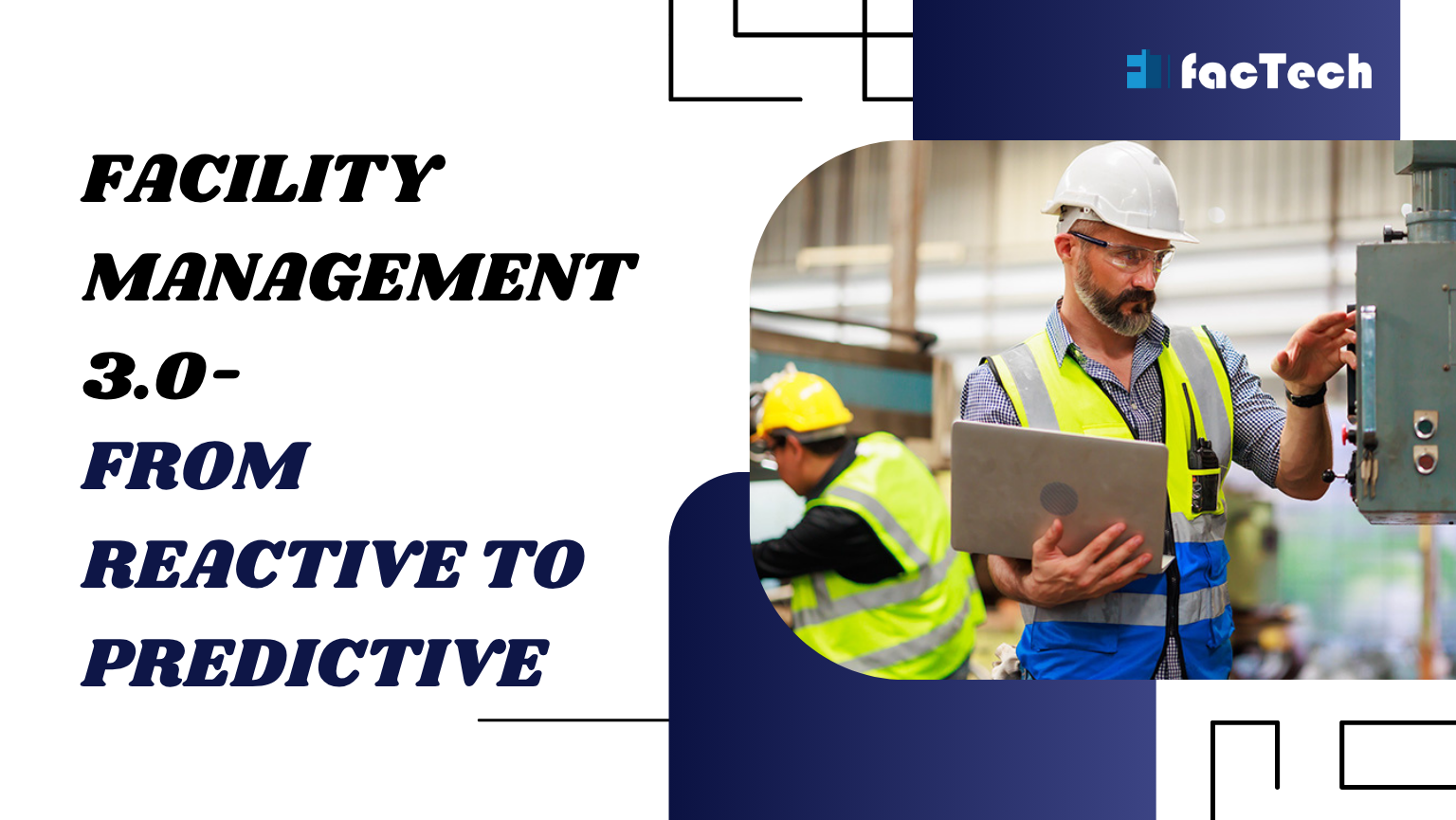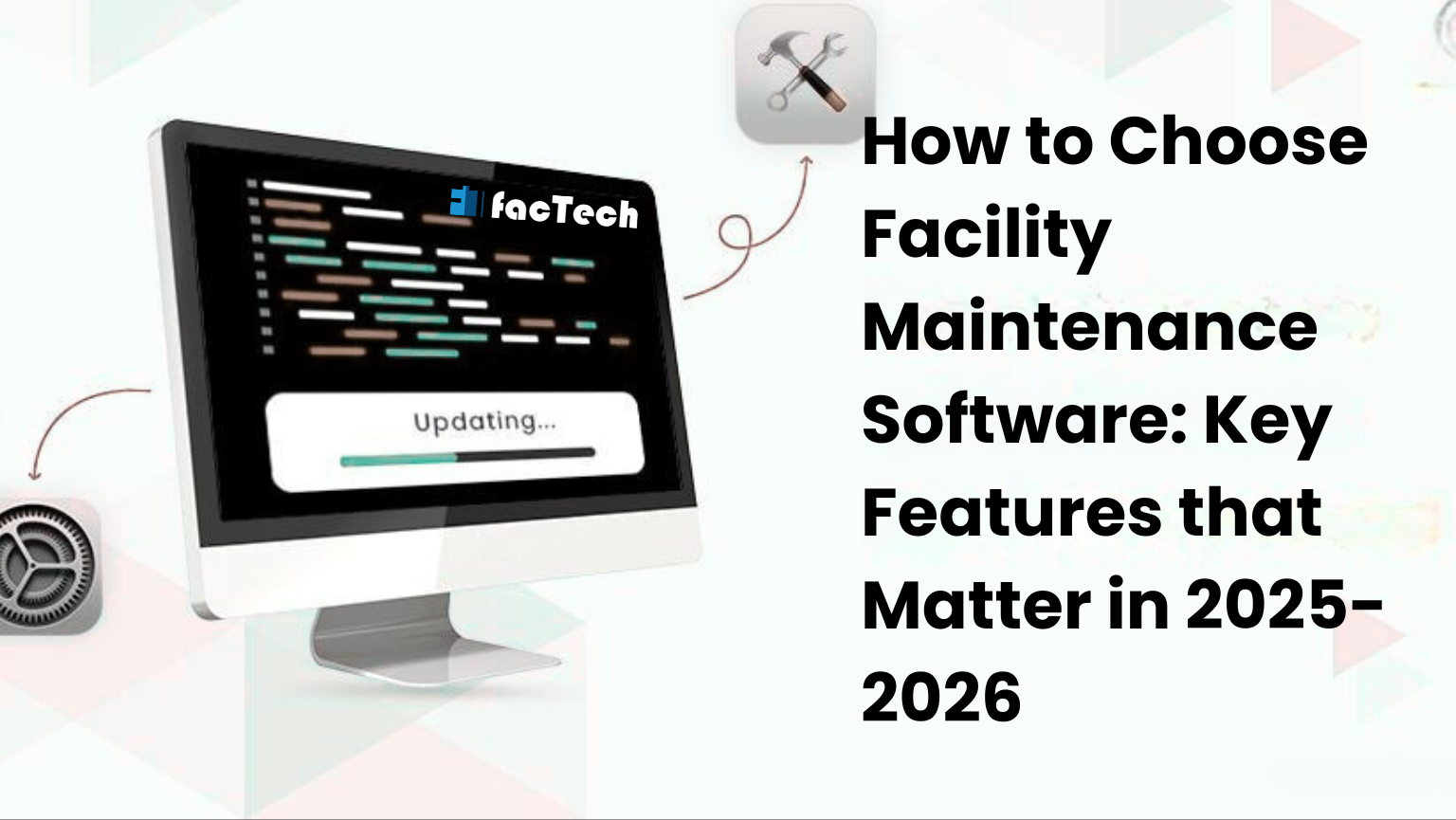Facility Management 3.0- From Reactive to Predictive
Contents
New technologies like Machine Learning (ML), Deep Learning (DL), and Artificial Intelligence (AI) have changed several fields, including facility management. These technologies change facility management from reactive to proactive methods, which leads to smoother operations and better experiences for those who live there. They do this through predictive maintenance, AI-powered automation, and new planning tools. The predictive facility management system changes the method of maintenance and performing operations. This blog article will talk about how predictive analytics can change how you maintain a facility and how Factech’s connected CAFM can help you use predictive analytics in facility management.

Evaluation of Facility Management from Reactive to Predictive
Reactive maintenance means doing nothing to fix equipment until it breaks down. Facility managers have long seen this as a major problem, even if many people think it is an expensive technique. Equipment failure is to blame for 42% of this unplanned downtime. This not only stops output, but it also costs too much to maintain, fix, and replace equipment. This short-sighted and reckless attitude can also have very bad effects on the facility managers’ reputation and financial line.
This is why facility managers are using methods like predictive asset maintenance analytics. One of the most important uses of predictive analytics is predictive maintenance. When used with computerized maintenance management systems (CMMS), it becomes a powerful tool for improving facility maintenance. This program gives facility managers all the information they need regarding asset and maintenance KPIs in one place, which helps them run maintenance operations more smoothly.
Use of Technology in Predictive Facility Management
IoT & Sensor Technology
The Internet of Things (IoT) and sensor technology make up the smart facility’s eyes and ears. IoT sensors built into important things like HVAC systems, elevators, pumps, lighting, and even seating keep track of things like temperature, vibration, energy use, humidity, and occupancy in real time. This granular data stream is what you need to make predictions.
Big Data Analysis:
IoT sensors and other devices create so much data, so quickly, and in so many different ways that we need robust Big Data analytics tools to handle it all. This means gathering, storing, processing, and analyzing huge datasets to find patterns, trends, and outliers that would be missed by hand.
Artificial Intelligence
AI and predictive analytics use past data and machine learning algorithms to predict future maintenance needs. This changes the way facilities are maintained from reactive to predictive. It helps with maintenance by:
Look at patterns and trends to guess when equipment will break down.
Use data-driven insights to figure out the best time to do maintenance.
Improve the accuracy of your predictions and fine-tune your maintenance plans over time.
Cloud Computing:
Cloud platforms give FM 3.0 the scalable infrastructure, storage, and computing capacity it needs to manage huge amounts of data and complicated analytics. It also lets people work together in real time from anywhere and makes sure that business goes on.
Seamless Integration:
A real FM 3.0 system works with a number of business solutions, such as Building Management Systems (BMS), Enterprise Resource Planning (ERP), Human Resources Management Systems (HRMS), and platforms for tenant experience. This makes all the data available in one place and gets rid of data silos.

Benefits of Predictive Facility Management
Increased Equipment Lifespan
One of the best things about predictive maintenance is that it can help equipment last longer. As equipment is only serviced on a schedule or as problems come up, it frequently wears out faster, which shortens its useful life. Predictive maintenance improves this by keeping an eye on equipment in real time, which lets facilities managers find and fix problems before they get worse.
Lower Unplanned Downtime
Unplanned downtime can be a big problem for facilities management because it can lower production and cause unexpected costs. Predictive maintenance solves this challenge by giving facilities managers an early warning system for possible equipment breakdowns so they can plan repairs before problems happen. Predictive analytics can help you figure out when a piece of equipment is going to break down, which lets you fix it before it does and lowers the chance of it breaking down unexpectedly.
Better Efficiency in Operations
Operational efficiency is very important in facilities management because it helps keep service levels high and makes the most use of resources. Predictive maintenance helps with this by making maintenance tasks easier and taking less time and money to keep equipment in good shape. Predictive maintenance helps facilities managers use their resources better and makes sure that maintenance chores are only done when they are needed by focusing maintenance efforts on the real demands of the equipment.
Data-Driven Decision Making
One of the best things about predictive maintenance is that it lets you make decisions based on facts. Predictive maintenance systems gather a lot of information about how well equipment works, which helps identify trends, patterns, and possible problems. This information can help facilities managers make smart choices about whether to do maintenance, when to update equipment, or how to optimize processes.
Better Asset Management
Facilities managers need to be able to manage their assets well, and predictive maintenance gives them the tools they need to get the most out of their assets. Predictive maintenance helps facilities managers keep track of the status and performance of assets in real time by keeping equipment in good shape. This makes sure that the assets are working as they should and keeping their worth.
Safer Working Environment
Safety is the most important thing in any institution, and predictive maintenance plays a big role in making the workplace safer. When equipment breaks down, it can cause accidents that put both workers and people in the building at risk. Predictive maintenance helps find any safety problems early on, so facility managers can fix them before they get worse. Predictive maintenance can find problems or warning indications that could mean a safety issue by keeping an eye on how well equipment works all the time.
Cutting Expenses
One of the best things about predictive maintenance is that it could lower the costs of keeping and fixing equipment. Traditional maintenance procedures, whether they are done after something goes wrong or to stop something from going wrong, can be expensive and not very useful. They may need to be done too often or cost a lot of money to fix something that goes wrong. Predictive maintenance, on the other hand, makes the maintenance schedule fit the real needs of the equipment. It keeps labor and repair expenses down by just identifying the essential interventions.
Benefits of Sustainability
Facilities management is becoming more focused on sustainability, and predictive maintenance helps with this by cutting down on waste and making the best use of energy. Predictive maintenance cuts down on energy use by making sure that equipment runs at its best. This not only lowers running expenses, but it also helps the environment. When equipment is well-maintained, it usually uses less energy and produces less pollution. This makes it easier for facilities to reach their environmental or sustainability goals.

Best Integrated CAFM System for Predictive Maintenance
Factech‘s Computer-Aided Facility Management (CAFM) system is a great example of a platform built for the FM 3.0 era. It lets businesses go from reactive to completely predictive operations, which is a big step forward. This is how Factech helps:
AI-Powered Smart Predictive Maintenance:
Factech uses AI and machine learning to look at data from IoT devices that are already in place and maintenance records from the past.
Comprehensive Asset Lifecycle Management:
Factech gives you a single, digital place to store all of your assets, including exact specs, purchase dates, warranty information, and a full history of maintenance.
Integration of IoT and Data Analytics in Real Time:
The Factech platform works perfectly with IoT sensors and existing Building Management Systems (BMS). It gathers real-time information on important factors and shows it on easy-to-use dashboards.
Automated Workflows with Smart Scheduling:
Factech does more than just predict problems; it also automates the whole maintenance process.
A Single Platform for All FM Operations:
Factech isn’t only about upkeep. It has a whole set of tools for managing work orders, controlling inventory, managing vendors, running a helpdesk, monitoring energy use, managing space, and making sure you’re following the rules—all in one place.
Mobile Accessibility
The easy-to-use mobile app lets field professionals get work orders, update their status, look up asset histories, and collect data (including notes and images) on the job site.
The bottom line
Facility Management 3.0 is more than just an upgrade to technology; it’s something that any business needs for its physical assets to work. Businesses may achieve unmatched levels of efficiency, create better work environments, and construct more robust operations by switching from a “break-fix” mindset to a predictive, data-driven one. With modern facility management system like Factech, the future of managing facilities isn’t just about keeping the lights on. It’s also about smartly improving every part of the physical environment for long-term success.
FAQs
Q: What is the main difference between facility management that reacts to problems and facility management that predicts problems?
Reactive FM repairs problems after they happen, but predictive FM uses data to find and stop them before they happen.
Q: How do IoT sensors help with predictive facilities management?
IoT sensors give you real-time information on how well your assets are working, which is very important for figuring out when they require maintenance.
Q: What part does AI play in maintenance that is based on predictions?
AI uses past data and machine learning to guess when equipment will break down and make maintenance routines more efficient.
Q: In what ways does the Factech CAFM system help predictive FM?
Factech employs AI to do smart predictive maintenance and puts all FM activities on one platform that can be accessed from anywhere.












